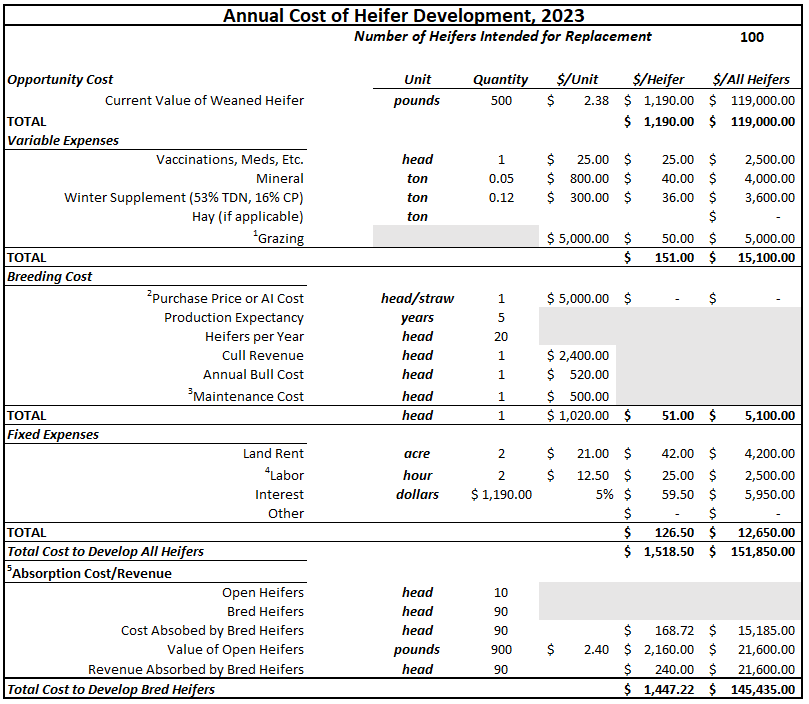Total beef cattle slaughter has declined by 3.5 percent since January, and is forecasted to decline by an additional 2.6 percent by the end of the year. According to the USDA September Livestock Slaughter Report, female slaughter is up from last month by 11.4 percent for heifers and 7.9 percent for beef cows. Total female slaughter currently accounts for 50.3 percent of all cattle slaughter. Several regions across the country are still experiencing impacts from drought which has resulted in limited hay production to sustain cattle during the fall and winter months and continued liquidation.
An increase in supply of cattle typically negatively affects prices. However, consumer demand for lean ground beef and willingness to pay for beef has remained steady. As a result, prices for culled cattle have increased as feedlots and packers work to continue to meet demand. Prices for boner cattle (80-85%) with an average dressing percentage are 28.6 percent higher than this week last year. When rebuilding does begin and if beef demand remains steady, prices for culled cattle can be expected to increase. Prices for cattle with a higher dressing percentage and BCS will be even higher not only because of the demand for beef, but also demand for breeding stock will increase as producers begin rebuilding. This begs the question of what will the return be for putting a little extra weight on those culled cows? Improving your cattle by essentially one BCS could be a risk that is worth the investment. Making the decision to improve the body condition score of cull cows involves knowing if you have the pasture and supplements to do so economically. Current prices for cull cows in Florida range from $88.18/cwt for average dressing lean cows (85-90%) to $108.74/cwt for high dressing breaker cows (75-80%).

***all costs do NOT include costs before weaning, 1-fertilizer cost, herbicide, etc., 2-all other sub categories under breeding cost will be $0 if using AI, 3-feed, grazing, mineral, vet, etc., 4-only labor dedicated to heifer development, 5-bred heifers absorb the cost of developing open heifers & revenue gained from sale of open heifers, *adapted from Beef Cattle Research Council Replacement Heifer Calculator.
–
Retaining heifers can become costly very quickly when analyzing all that goes into raising the future genetics of a herd. From feed costs to pasture carrying capacity to breeding decisions, a lot of (expensive) factors go into making sure a heifer is in good condition to be bred, carry a calf, and wean that calf (Figure 1). However, there is a potential positive return in that heifer when she is considered as a long-term investment whether it be in your operation or selling her as a bred heifer. Because again, when expansion begins, the value of females will increase. The current average price for young, bred cattle is $118.91/cwt, a 12.6 percent increase year-over-year.
–
Thinking Economically in the Everyday Tasks
Should you retain and raise heifers as replacements, or sell them to take advantage of favorable calf prices? Should I cull my opens now or put a little weight on them to improve BCS to sell for a higher price? The answer to these questions involves following the cattle market trends and then assessing the risks and goals for each individual operation. While the goal of every producer is not the same, analyzing the pattern of historical market trends can be of use to each operation when planning how to achieve each goal. As the fall season brings on culling decisions and decisions about heifers, pencil out what those goals are and create an economical plan that the future of your herd can depend on.
–
For questions, contact Hannah at h.baker@ufl.edu
See this update and other helpful resources online at https://rcrec-ona.ifas.ufl.edu/about/directory/staff/hannah-baker/
- The Economic Influence of Intentional Management of Your Cow Herd - December 19, 2025
- December 2025 Florida Cattle Market Update - December 19, 2025
- October 2025 Florida Cattle Market Update - November 7, 2025

